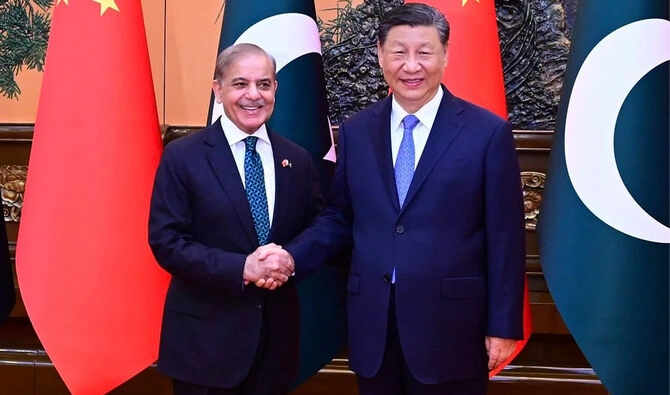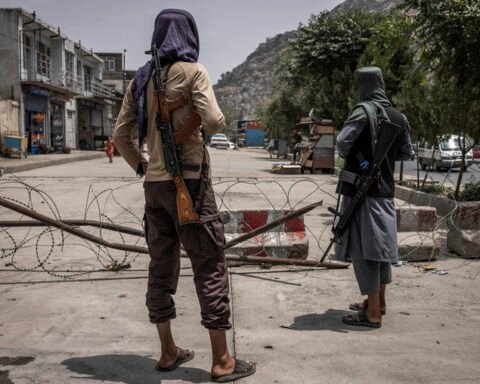The security overtures between Pakistan and China are not just occasional convergence between two strategic partners, this is a complete rebalancing of security order in South Asia. This cooperation through ventures such as the China-Pakistan Economic Corridor (CPEC) has now grown up to strategic terms with far reaching military and geopolitical advantages. The deepening of this axis is posing a direct challenge to the traditional Indian influence in the area, and it forces New Delhi to redefine its security ideology, the way borders are managed and its approach to its foreign policy. Though the rhetoric of regional leaders is usually dedicated to the desire of peace and cooperation, the magnitude and extent of Chinese-Pakistan strategic cooperation precondition the readiness to fight on the level of serious capabilities moving deterrence to the level of real potential. Due to this India must deal with a multidimensional threat landscape that is becoming increasingly complex necessitating a complete overhaul of the Indian strategic outlook.
A Long-Term Reconfiguration of South Asia Security System
One of the cogent aspects of this strategic change is the institutionalization of the China-Pakistan friendship which has altered what was traditionally a short-term strategy into a strategic long-term partnership between the two countries. This transition undermines India directly because it reduces the country to make unilateral decisions in the region especially in areas of conflict such as Kashmir and the Line of Actual Control (LAC) with China. The China Pakistan alliance today is not like other alliances witnessed in the past that were based on a reactive politics it is quite the opposite as it is based on extensive coordination in areas that include defense, intelligence, technology transfer and strategic planning. The result is clearly seen in India gaining a rather more paranoid outlook not only in its western boundaries against Pakistan but also in the northern borders against China. These two front pressures undermine India to assert a sense of dominance and makes it apply a more cautious and strategic manner of dealing with the regional interests giving a new meaning to the strategic balance of South Asia.
Military Axis between China and Pakistan
The opposite of coercive diplomacy an attitude of deterring action based not Jesus on peace but on capacity as emphasized in the military aspect of the China–Pakistan relationship. The bilateral military training, the trade of weapons, the satellite surveillance integration and the agreements of collective security of cyber space all indicate a methodical accumulation of united military readiness. Indeed, China has been providing state of the art drones, air defense systems and naval resources to Pakistan which has substantially increased the war fighting capability of Islamabad. Besides this the People Liberation Army (PLA) of China is also conversant with the Pakistani terrain and strategy as they conduct combined drills and defense discourses. This dynamic synergy is a very strong deterrence in the minds of the Indian military planners. The subtext is obvious, any Indian military action either in the west or in the north will have a synced retaliation by the highly coordinated axis and as such advance the threshold of confrontation and make unilateral Indian action a much more hazardous endeavor.
A Harmonized Multi Area Battle against Indian Strategic Interests
India has now faced a multi domain of threat that extends beyond battlefield considerations. The ferment is evident in cyber security, space-based intelligence, maritime control and use of information as far as war is concerned which is why more people have inclined towards the China-Pakistan axis. With the example of the Indian Ocean, the fact that Chinese warships dock at the top of the Gwadar Port and the growing ability of the Pakistani maritime surveillance suggests that both countries have a common agenda of undermining Indian naval dominance. The two countries have increased to a larger extent collaboration on the use of data encryption, artificial intelligence in military and electronic war methods in the field of cyber space. Such a multidimensional perception of threat makes India not only defend its borders, but also its cyber and maritime frontiers against a well coordinated action against a unified and aligned opposition. The strategic circles of India are now pressurized into transforming the traditional border defense paradigm into a more collusive and comprehensive national security approach.
Chinese Credibility in raising the Strategic weight of Pakistan
The issue of strategic credibility and increased capability of operations by China has placed Pakistan in a new high as a major player in the region. Pakistan is now less vulnerable with more bargaining power given the country is allied to a global giant such as China since the same was a vulnerable party because of economic weakness and internal instability. Beijing implicit endorsement is a force multiplier of Pakistan making the country gain strategic weight in South Asia relative to India. It is also due to the arrival of Security personnel and engineers of the Chinese on the countries under the control of Pakistan especially the Gilgit Baltistan region which has given added dimension to the geopolitics in the region. When China is involved directly in the regions that are claimed by India it changes the character of conflict as it is not bilateral anymore, it becomes tripartite in practice. This is a process which makes India feel not only obliged to consider Pakistan a source of irritant in its own backyard but also the armed of a global rival.
During this strengthening harmony, India is simply left with no option other than reviewing and adjusting its strategic positioning. That includes transitioning defense to proactive deterrence, modernization of its army and how well the various arms of the military can manage to interoperate. The Indian doctrine will now have to face the possibility of contingencies occurring on two fronts while will necessitate focusing more on quick deployment, satellite communication and local buildup of weapons. Diplomatically, India will tend to strengthen the relations with its partners like the United States, Japan, Australia and France especially in a framework like the Quad. Nevertheless, the external alliances should be accompanied by internal coherence. The division within the internal political body in terms of national security may translate into death in times when threats are not isolated singular or occasional anymore but highly interconnected and long lasting.
Disclaimer: The views and opinions expressed in this article are exclusively those of the author and do not reflect the official stance, policies, or perspectives of the Platform.








